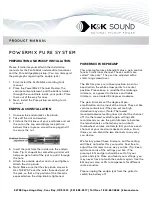
E-14
ElektroPhysik
6.
Scan Mode
While the MINITEST 403 excels at making single point
measurements, it is sometimes desirable to examine a
larger region, searching for the thinnest point. The MINI-
TEST 403 includes a feature, called Scan Mode, which
allows it to do just that.
In normal operation, the MINITEST 403 performs and
displays four measurements every second, which is quite
adequate for single measurements.
In Scan Mode, however, the gauge performs sixteen
measurements every second. While the transducer is
in contact with the material being measured, the MINI-
TEST 403 is keeping track of the lowest measurement
it finds.
The transducer may be „scrubbed“ across a surface,
and any brief interruptions in the signal will be ignored.
When the transducer loses contact with the surface for
more than a second, the MINITEST 403 will display the
smallest measurement it found.
When the MINITEST 403 is not in calibration mode, press
the UP arrow key to turn Scan Mode on and off. A brief
message will appear in the display confirming the
operation. When the transducer is removed from the
material being scanned, the MINITEST 403 will (after a
brief pause) display the smallest measurement it found.
7. Transducer Selection
The MINITEST 403 is inherently capable of performing
measurements on a wide range of materials, from
various metals to glass and plastics. Different types of
material, however, will require the use of different
transducers.
Choosing the correct transducer for a job is critical to
being able to easily perform accurate and reliable
measurements. The following paragraphs highlight the
important properties of transducers, which should be
considered when selecting a transducer for a specific
job.
Generally speaking, the best transducer for a job is one
that sends sufficient ultrasonic energy into the material
being measured such that a strong, stable echo is
received by the MINITEST 403. Several factors affect
the strength of ultrasound as it travels. These are
outlined below:
Scan Mode, Transducer Selection











































